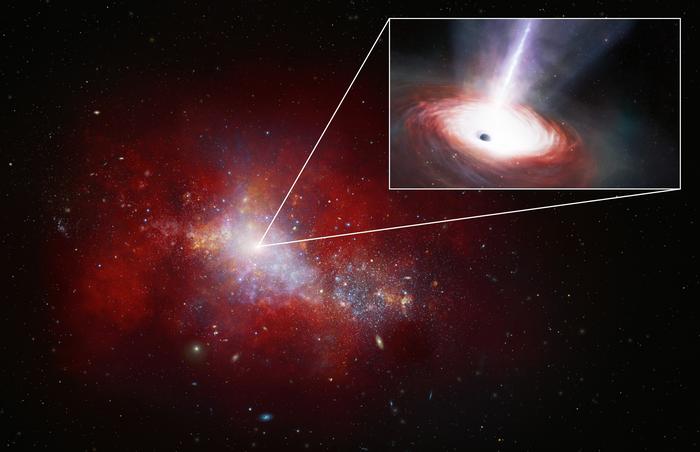Summary: Scientists have identified an extraordinary black hole that’s consuming matter at over 40 times its theoretical limit, just 1.5 billion years after the Big Bang. The discovery, made possible by the James Webb Space Telescope and Chandra X-ray Observatory, provides new insights into how supermassive black holes grew so rapidly in the early universe.
Journal: Nature Astronomy, 2024, DOI: 10.1038/s41550-024-02402-9 | Reading time: 5 minutes
In a groundbreaking discovery, astronomers have found a black hole that’s breaking all the rules about how these cosmic giants should grow.
A Cosmic Feast
“This black hole is having a feast,” explains Julia Scharwächter from the International Gemini Observatory. The object, known as LID-568, is consuming matter at a rate that defies theoretical limits, providing new clues about how supermassive black holes grew so quickly in the universe’s early days.
The discovery was made possible by combining observations from two of humanity’s most powerful space observatories: the James Webb Space Telescope (JWST) and the Chandra X-ray Observatory.
Breaking the Speed Limit
What makes this black hole special is the rate at which it’s consuming matter – over 40 times its Eddington limit, the theoretical maximum rate at which a black hole should be able to feed. This limit represents the balance between a black hole’s gravitational pull and the outward pressure generated by the heat of infalling matter.
“This extreme case shows that a fast-feeding mechanism above the Eddington limit is one of the possible explanations for why we see these very heavy black holes so early in the Universe,” notes Scharwächter.
An Innovative Approach
Finding LID-568 required innovative observational techniques. “Owing to its faint nature, the detection of LID-568 would be impossible without JWST. Using the integral field spectrograph was innovative and necessary for getting our observation,” explains Emanuele Farina, a co-author of the study.
This approach led to an unexpected discovery: powerful outflows of gas around the central black hole. These outflows might act as a release valve for the excess energy generated by the extreme feeding frenzy.
Implications for Black Hole Evolution
The discovery provides new insights into how supermassive black holes form from smaller “seeds.” These seeds are thought to come from either the death of the universe’s first stars or the direct collapse of gas clouds.
“The discovery of a super-Eddington accreting black hole suggests that a significant portion of mass growth can occur during a single episode of rapid feeding, regardless of whether the black hole originated from a light or heavy seed,” explains lead researcher Hyewon Suh.
Glossary:
– Eddington limit: The theoretical maximum rate at which a black hole can consume matter while maintaining stability
– Integral field spectrograph: An instrument that captures detailed spectral data for every point in its field of view
– Outflows: Powerful streams of gas ejected from around the black hole
– Supermassive black hole: An extremely massive black hole found at the center of most galaxies
Quiz:
1. How many times faster than its theoretical limit is the black hole consuming matter?
Answer: Over 40 times the Eddington limit
2. How long after the Big Bang was this black hole observed?
Answer: 1.5 billion years
3. Which two space telescopes were used to make this discovery?
Answer: James Webb Space Telescope and Chandra X-ray Observatory
4. What unexpected feature did researchers discover around the black hole?
Answer: Powerful outflows of gas
Enjoy this story? Get our newsletter!
If our reporting has informed or inspired you, please consider making a donation. Every contribution, no matter the size, empowers us to continue delivering accurate, engaging, and trustworthy science and medical news. Independent journalism requires time, effort, and resources—your support ensures we can keep uncovering the stories that matter most to you.
Join us in making knowledge accessible and impactful. Thank you for standing with us!

